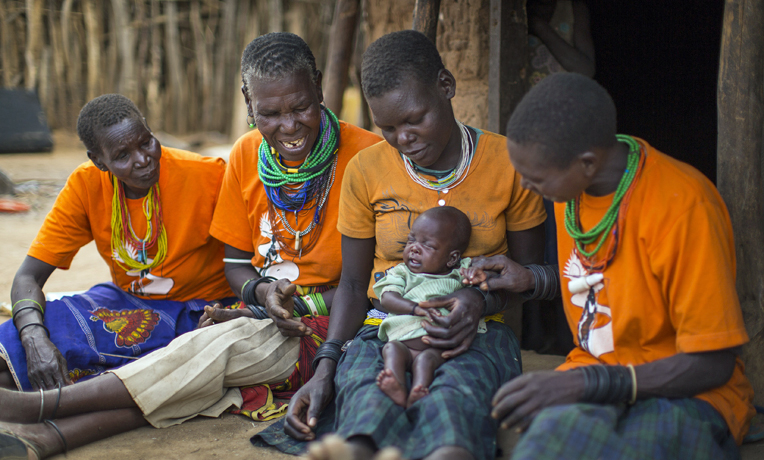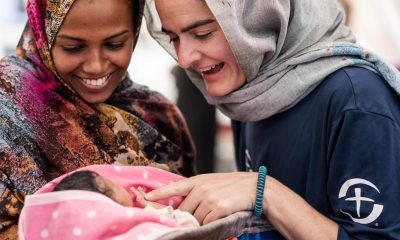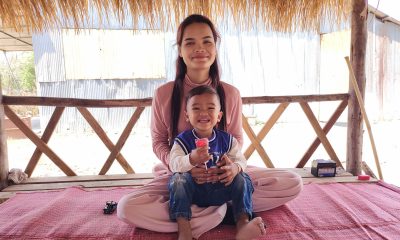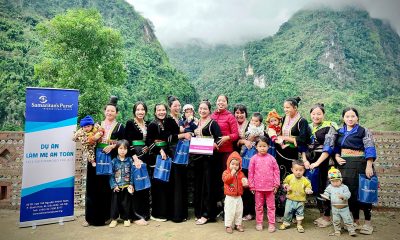Providing emergency transportation for women to deliver their babies in healthcare facilities reduces infant and maternal mortality rates in northeastern Uganda.
“Will I be able to make it to the health center before my baby is born?” Agnes Loucho asked herself as she weighed the risks of giving birth at home.
As her due date grew ever closer, Agnes had grown increasingly excited about meeting her new baby but also anxious about the delivery.

The Samaritan’s Purse maternal child health project in Karamoja, Uganda, is teaching women about healthy behaviors, including the benefits of giving birth in a health center rather than at home.
She had learned about the safety benefits of delivering her baby in a healthcare facility through the Samaritan’s Purse Maternal Child Health project, Erot Ngolo Kitete, which means “The New Way” in Ngakarimojong, a language spoken in northeastern Uganda.
PHOTO GALLERY: See more women’s projects in Karamoja, Uganda
Embracing the project’s theme of adopting a “new way” of life through healthy behaviors, Agnes decided to use the prenatal care services offered at her local health center throughout her pregnancy. It was during one of these checkups that she learned that the baby had a large head and a home delivery could mean death for mother or child.
The nurse’s warnings flooded Agnes’s mind when she woke up feeling strong contractions. Her baby was ready to make his entrance into the world, but would Agnes be able to ensure he arrived safely?
She considered her options. She could give birth at home, or she could find a friend with a wheelbarrow who would be willing to push her to the health facility along stone-laden, bumpy dirt roads. Unsure of what to do, Agnes called her friend Alfreda, who works with the Samaritan’s Purse maternal child health project, for advice.
Alfreda quickly arrived at the house with a plan to get Agnes to the nearest health center using the community’s new “Zambulance”—a village ambulance designed to transport patients to rural medical facilities.

Agnes was afraid that an at-home birth would mean death for her or her baby. When she called her friend Alfreda, she had an solution–a new village ambulance.
The ambulance, a trailer that can be attached to a bicycle or motorcycle, was among five donated to Samaritan’s Purse by an organization called Zambikes. The ambulances will reduce maternal and infant mortality rates in a region where 174 out of 1,000 children die before they reach the age of 5. This is largely due to the fact that only 15 percent of women in Karamoja give birth in a health center, compared to the national average of 41 percent.
The Zambulance allowed Agnes to rest comfortably on a mattress and under a protective canopy while being pulled to the delivery ward.
“I wish that there were more village ambulances so that all women would have a way of getting to the health center when they are in labor,” Alfreda said.
Thanks to Alfreda’s quick thinking and the Zambulance service, Agnes arrived at the health center with just minutes to spare before her baby son was born. Nurses treated her for birth-related injuries and provided Agnes with vitamins and necessary medications to hasten her recovery. Agnes’ baby boy was bathed, weighed, and given a clean bill of health.
Agnes, now back at home and adjusting to her life as a new mother, often reflects back on her emergency ride in the village ambulance.

The village ambulance is designed to transport patients to rural medical facilities. It’s a trailer that can be attached to a bicycle or motorcycle.
“It was a comfortable ride and a good way to get to the health center quickly,” she said.
Agnes knows that without the village ambulance, she would have been forced to deliver her baby at home, where she would not have been able to receive the medical attention that she, and so many other Karamojong women in her situation, needed to save her own life and the life of her newborn.






